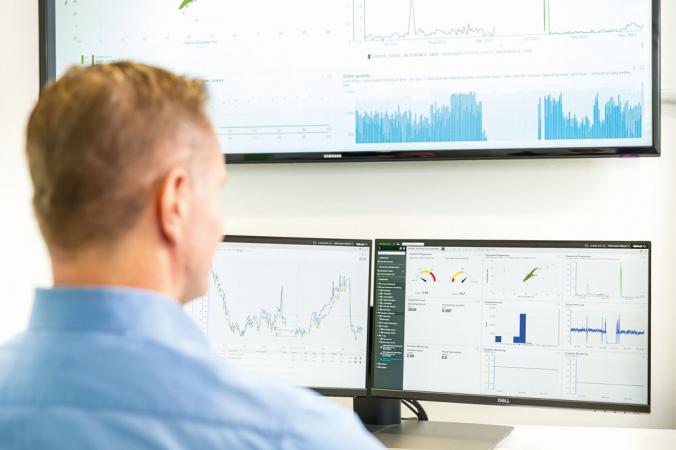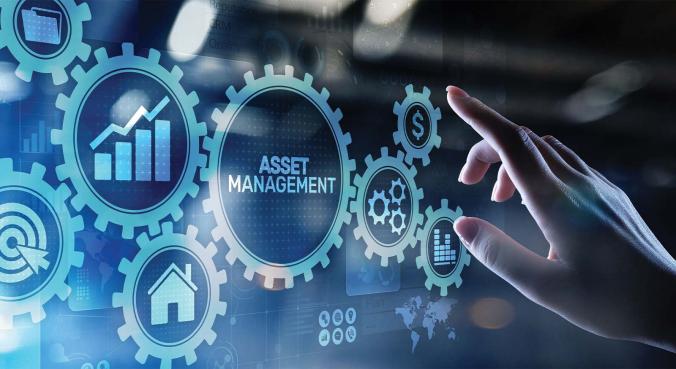Recording – Back to the Future (Part 2)
The recording of the raw signal was described in the first part of this article . Now we will move on to the post-processing of recorded raw signal.
First part of this article can be found here
The two modes most commonly used to post-analyse the raw recorded signal in the Adash firmware is the Analyser and Run Up/Coast down. You can post-analyse immediately after recording in-situ or in the office at a later date. The Analyser mode offers a wide range of readings: simple (overall value), commonly used (time signals, spectrum) or more advanced readings (frequency response).
The Run up/Coast down mode enables readings to be continuously measured and saved. This means that you can set up the time interval between two readings (example: the reading is taken every second) or the interval depends on the speed change (the new reading is taken when there is a speed change of more than 1 Hz from the previous saved reading).
You Can Make Time Run Faster….
If the record of run up, for example, is 20 minutes long, then post-processing in normal mode the play back time is real time (20 minutes). This creates a situation in which it is the same as if you had walked back in time and were doing an evaluation right next to the machine, but you have the advantage of playing back multiple times with a different setup until you have the data analysed at optimum resolution and frequency.
In the event you do not want to wait 20 minutes to have the data analysed, then we have developed a very unique feature – the time can run faster. One minute can be reduced for example to only one second. It is done by special block data access and a bulk current evaluation algorithm.
The speed up of time is inversely proportional to the complexity of the required analysis. In the case of processing the simple readings like overall values, we can make the time even 1000 times faster (it means that 1 hour of recording is processed in 3 seconds). In the case of processing more complex readings, such as order analysis that requires relatively a long computing time, we can make the time only typically 50 times faster.
The big advantage coming from this feature is user freedom to try different setups and view the different results in a fraction of the time. It allows the analyst to “experiment” as if in the field and to repeat the data collection process on the equipment.
Virtual Unit in the Computer
Up to this point, we have been talking about the use of an instrument for recording and also for analysis. However there are more options. The recording can be easily transferred from the instrument memory to the computer (by USB cable).
A version of the firmware running on the VA4Pro unit is available to download and run on your PC or Windows Tablet. This is the 4410 Virtual Unit VA4Pro software and it is available free of charge to download from www.adash.com.
This software is a fully functioning version of the firmware running on the VA4Pro unit. Once the virtual software is loaded onto your PC you will have the same screen as that which appears on the A4400 VA4 Pro analyser. Initially it was developed for marketing purposes, as it enables a potential customer to work with a virtual version of the VA4Pro Analyser.
As a result we quickly saw the benefit of being able to process the saved recordings taken in the VA4Pro on the PC. Although the mouse and keyboard, (or touch screen if using Window 8 or 10) makes this process much faster and more user-friendly, the main advantage is the superior processing speed and power of most PC’s as compared to the CPU in the Adash VA4 results in much faster analysis time.
Share Your Records
The simple explorer-based file architecture allows you to export the records in .wav format and share with colleagues so they can utilize it with various software platforms. Although you can play the .wav file by audio output in your computer and then connect the analyser to perform the analysis, it is of course not the best solution because the frequency range starts at over 20Hz. The conversion from digital to analogue also is not painless, but it is better than nothing.
However, an Adash provides a much more elegant solution on how to share the recordings with your colleagues who do not have the VA4 Pro analyser. Remember – a fully functional version of the VA4Pro firmware can be downloaded for free from our website.
Once downloaded onto your PC the recorded raw data files can be shared without restrictions and analyzed by anyone who wishes. This can be a very powerful tool when the data is collected (or recorded to be more exact) in one location, but analysed at will by various analysts that may have varying perspectives on what is of interest; then the results are collaborated and discussed.
The SAB Paired to a Laptop is the same as the VA4 Pro analyzer
We don’t necessarily need the VA4Pro instrument to create the record. The Adash 4404 SAB (Signal Acquisition Box) unit, which has the same AC/DC inputs as A4400 VA4 Pro is available. Simply upload the license file that corresponds with the SAB 4 Channel module into the 4410 Virtual software then connect the SAB to the laptop or tablet using a standard Mini-USB and your PC or table becomes a four channel analyser with all the features of the VA4.
Many users prefer this alternative as the navigation is much easier, it can be shared real time with others by utilizing the wireless and remote desktop connection. This application also offers a unique option to “stack” up to four SAB units, which turns your PC into a 16 Channel monitor.
The small SAB units are much cheaper and easier to ship, and they are can be more conveniently transported in a backpack with a few sensors and cables rather than having the burden of a large hard transport case and all the accessories needed.
What about the Future, Recording Only?
The possibility to make a recording is also available when collecting route data. It means that you can make a recording for post-analysis apart from common route readings (overall, spectra…).
And what is our vision of the future? Why should we take common readings such as overall values or spectrum in the route? Why don’t we just make a recording of the raw signal and do all analysis later in the computer interface?
We have been considering these futuristic visions in our company for some time. It is obvious that the voices of opponents will appear and they will be saying that they need to see the results of measurements at the site, which is true for the analyst.
On the other hand there are companies where the routes are taken by technicians or even operators who don’t know much or anything about vibration. In that instance a record is a better solution when technically feasible as the “remote analyst” then has more options. He/She can review data as in standard route mode, but also has the option to post analyse in higher resolution or frequencies should the need present itself.
We have been cooperating long time with our customers in the nuclear power industry to develop this platform for condition-monitoring. There are thousands of measurement points at that site, but only 2 vibration specialists to analyse the data.
In this case they could not manage to take all the readings, so maintenance personnel have simple data collectors to record the data and then the vibration specialists can post-analyse. When more advanced data acquisition is needed then the vibration specialist would use advanced analysers and leave his desk.












